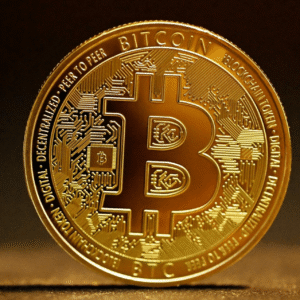The crypto world moves at lightning speed. Prices swing wildly, headlines spark FOMO and FUD, and traders can make or lose fortunes in a matter of hours. In this dynamic environment, relying solely on technical indicators or fundamental analysis might not be enough. An increasingly popular edge? Social media indicators.
Understanding how to leverage social media sentiment, activity patterns, influencer behavior, and platform trends can help short-term crypto traders make sharper decisions. But how exactly does this work? Let’s dive into the psychology, tools, and real-time applications of using social media as a trade signal.
The Rise of Social Media in Crypto Trading
Unlike traditional financial markets, crypto is deeply embedded in digital culture. Communities form on platforms like Twitter (now X), Reddit, Telegram, Discord, and YouTube. News breaks on these networks faster than mainstream media can report it.
More importantly, market sentiment often originates on social platforms. A single tweet from Elon Musk can send Dogecoin soaring. A Reddit post can kickstart a $GME-style pump. As such, social media isn’t just a space for discussion—it’s a livewire of market sentiment.
In short-term trading, where speed is key, these indicators can offer traders an edge if they know how to read them.
What Are Social Media Indicators in Crypto?
Social media indicators are metrics and signals derived from user activity and content on social platforms. They include:
- Mentions: The frequency a crypto asset is mentioned
- Engagement rate: Likes, retweets, comments on relevant posts
- Sentiment analysis: Whether posts are positive, neutral, or negative
- Influencer behavior: What top crypto influencers are saying or promoting
- Trend velocity: The speed at which a topic or coin is gaining traction
- Platform-specific behavior: Unique patterns on Reddit, Telegram, X, etc.
These indicators are often gathered and processed through AI-based tools like LunarCrush, Santiment, or The Tie, which aggregate and score social sentiment data across platforms.
Why Social Media Matters for Short-Term Crypto Trades
Short-term trades often hinge on momentum and market psychology. While traditional TA tools (MACD, RSI, Bollinger Bands) give you technical structure, social indicators tell you how people feel and react in real time.
Consider these examples:
- A low-cap coin sees a 500% increase in mentions on Telegram and Reddit within an hour—a likely indicator of coordinated pump.
- Bitcoin sentiment shifts sharply negative across Twitter following bearish news—a potential signal for downward price momentum.
- A meme coin like $PEPE starts trending with high engagement from crypto influencers—early signs of short-term upward volatility.
These aren’t hypothetical. Traders increasingly use these metrics to anticipate price movement before it shows up on a chart.
Key Social Media Platforms for Crypto Sentiment Analysis
Each social platform has its own nuances when it comes to crypto trading. Here’s a comparison of how different platforms contribute to social sentiment:
| Platform | Audience Type | Signal Strength | Unique Value |
|---|---|---|---|
| Twitter/X | Traders, influencers | High | Real-time news and influencer signals |
| Retail investors | Medium | Deep discussions, early discovery | |
| Telegram | Pump groups, communities | High | Insider chatter, low-cap coin signals |
| Discord | Devs, NFT/DAO communities | Medium | Project updates, community health |
| YouTube | Retail, analysts | Low-Medium | Long-form content, influencer opinion |
Platforms like Twitter/X offer real-time engagement metrics. Reddit is great for gauging community interest in new projects, while Telegram and Discord are breeding grounds for early pump signals and insider talk.
Best Tools to Track Social Media Indicators
You don’t need to manually scroll through Reddit or monitor tweets 24/7. Several powerful tools offer aggregated social metrics:
1. LunarCrush
- Tracks social engagement, sentiment, influencer activity
- Offers Social Volume and Galaxy Score (0–100)
- Covers Twitter, Reddit, YouTube, Medium, and more
2. Santiment
- Offers on-chain + social + development indicators
- Tracks Telegram mentions, Reddit comments, and more
3. The Tie
- Advanced sentiment analysis used by institutional clients
- Real-time sentiment scoring, trending asset alerts
4. CryptoMood
- NLP-based AI analyzing crypto-related news, tweets, and Reddit posts
These tools allow you to monitor spikes in mentions, changes in sentiment, and trending topics—providing a social edge to your technical chart analysis.
How to Read Social Media Sentiment for Trading Signals
Here’s how traders use social indicators effectively:
1. Monitor Volume and Velocity
- A sudden spike in Twitter mentions or Telegram group activity can indicate a breakout.
- High message velocity often correlates with rising prices—especially for low-cap coins.
2. Analyze Sentiment Trends
- Bullish sentiment = potential short-term price increase.
- Bearish sentiment = possible correction or sell-off.
Sentiment tools like Santiment’s “Weighted Sentiment” offer quantitative scoring to guide you.
3. Watch for Influencer Triggers
- Tweets from Elon Musk, CZ, or top NFT influencers can drive short-term market reactions.
- Use tools like LunarCrush to track influencer impact metrics.
4. Look for Anomalies and Divergence
- Price dropping while social sentiment rises? A potential bullish divergence.
- Price spiking but sentiment dropping? Be cautious—FOMO may be fading.
Practical Use Cases for Traders
Let’s look at real-life examples of traders leveraging social media:
Case 1: Dogecoin and Elon Musk Tweets
When Elon tweeted about Doge in early 2021, Twitter mentions exploded. Traders who monitored this surge before the price spike had a golden entry opportunity.
Case 2: $SHIB and Reddit Hype
SHIBA INU’s meteoric rise in 2021 was preceded by massive Reddit chatter. Tools like The Tie showed an uptick in sentiment days before the price move.
Case 3: $PEPE and Telegram Buzz
Before $PEPE exploded, Telegram pump groups saw a 400% spike in activity. Early traders who caught this wave used it to ride the short-term pump.
Risks of Over-Relying on Social Media Signals
While social indicators are powerful, they come with risks:
- False Positives: Not all spikes in social activity lead to price moves.
- Manipulation: Bots and paid influencers can skew data.
- Delayed Reaction: Sometimes sentiment lags behind price changes.
- Emotional Trading: FOMO/FUD can lead to irrational entries.
Always combine social media signals with solid technical analysis and risk management.
Key Takeaways: Using Social Media in Your Strategy
Here’s a step-by-step approach to incorporating social signals:
- Set up tools: Use LunarCrush or Santiment dashboards.
- Create alerts: Watch for volume or sentiment spikes.
- Validate with charts: Confirm social triggers align with technical patterns.
- Act quickly: These signals are short-lived. Be decisive.
- Take profits fast: Social-fueled rallies often reverse sharply.
Final Thoughts: Blending Sentiment and Strategy
In crypto, trading success often comes down to edge and timing. Social media sentiment offers an unparalleled lens into market psychology—a critical element for short-term moves.
But like all tools, it works best as part of a combined strategy. Use social indicators to gauge momentum, confirm with technicals, and act with discipline.
In a world where one meme can spark a bull run, ignoring social media signals means ignoring the heartbeat of the crypto market.
Want to Level Up Your Crypto Game?
Check out LunarCrush and Santiment for real-time social metrics.
Also explore our guides on:
- Top Crypto Portfolio Trackers
- How to Trade Altcoin Breakouts
- Best Telegram Groups for Crypto Alerts
- Stay ahead. Trade smart. And always listen to the social noise—it just might be your next trading signal.






